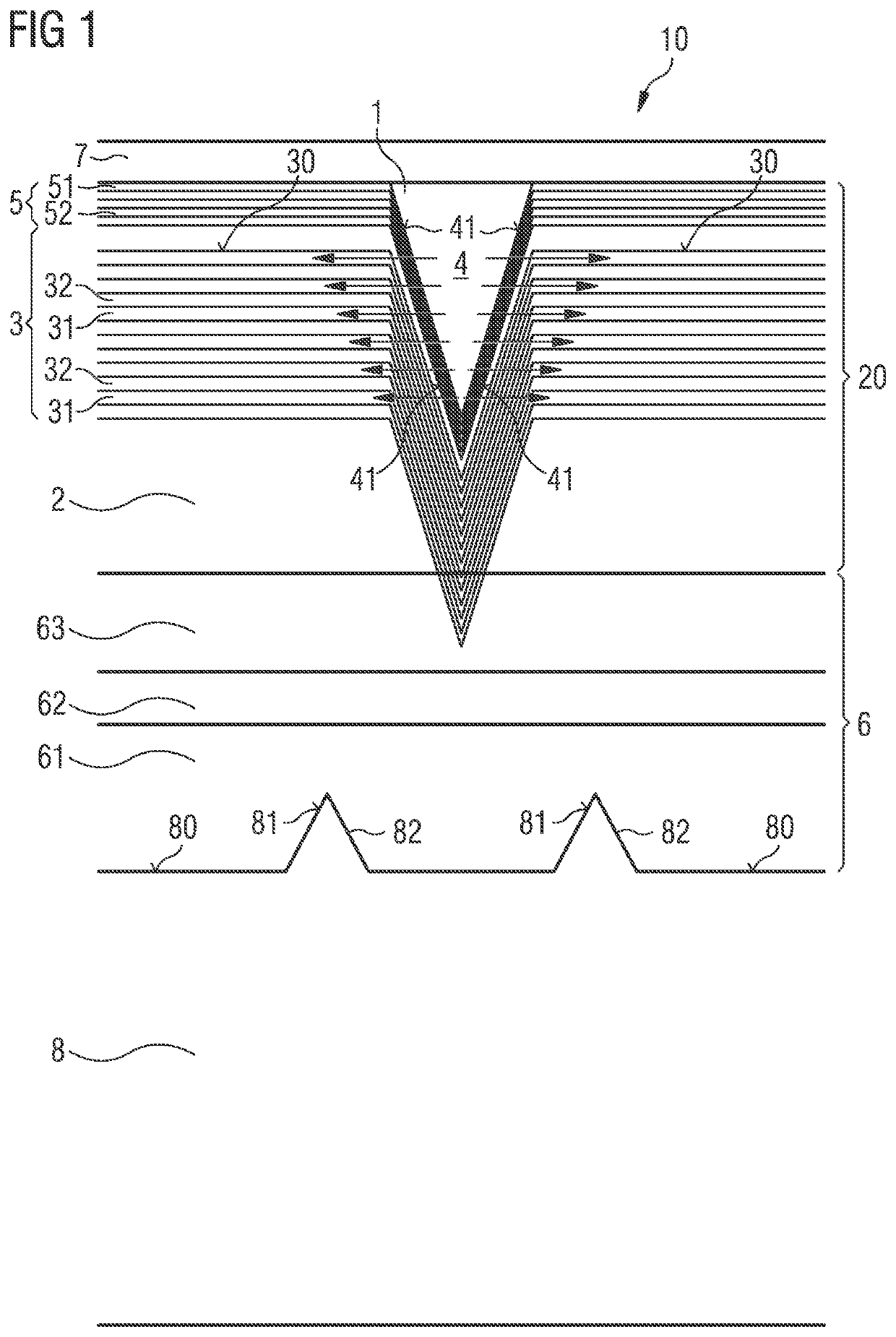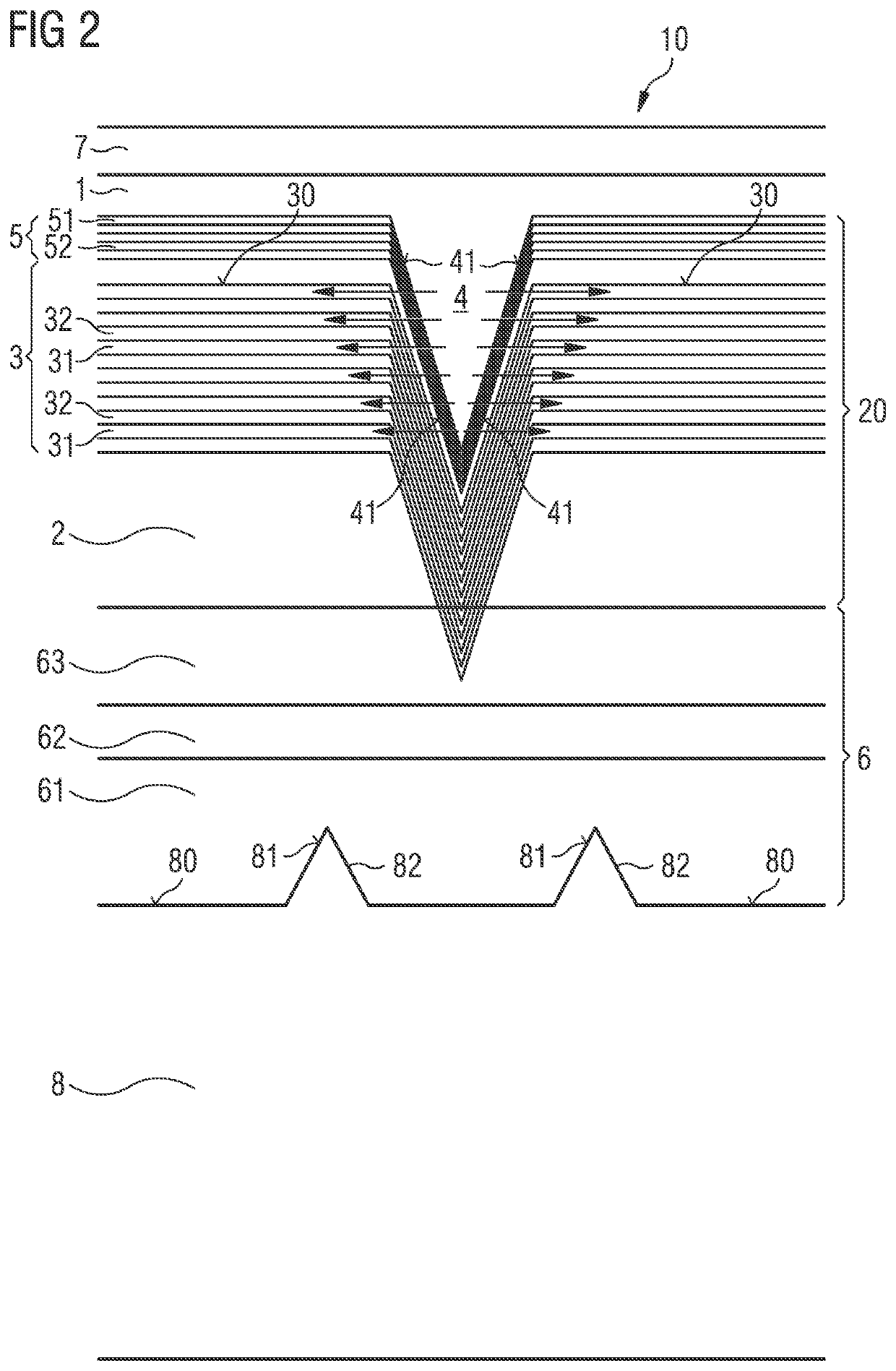Component having enhanced efficiency and method for production thereof
a technology of components and efficiency, applied in the field of components, can solve problems such as efficiency loss of optoelectronic components, and achieve the effect of increasing efficiency
- Summary
- Abstract
- Description
- Claims
- Application Information
AI Technical Summary
Benefits of technology
Problems solved by technology
Method used
Image
Examples
Embodiment Construction
>FIG. 1 shows a component 10 having a carrier 8 on which a semiconductor layer sequence 20 is arranged. The carrier 8 can be a growth substrate on which the semiconductor layer sequence 20 has been epitaxially grown, for example. The semiconductor layer sequence 20 has an active zone 3 which is arranged between a first, for instance p-conducting semiconductor layer 1, and a second, for instance n-conducting semiconductor layer 2. In particular, the active zone 3 is configured for generating electromagnetic radiation during operation of the component 10.
[0037]The active zone 3 has a multiple quantum well structure comprising a plurality of alternating quantum well layers 31 and quantum barrier layers 32. The number of quantum well layers 31 is at least 3 or at least 5 and is, for example, between 3 and 20 inclusive, for instance between 3 and 15 inclusive, for instance 9. The quantum well layers 31 and quantum barrier layers 32 may be based on a III-V compound semiconductor material,...
PUM
| Property | Measurement | Unit |
|---|---|---|
| thickness | aaaaa | aaaaa |
| thickness | aaaaa | aaaaa |
| vertical height | aaaaa | aaaaa |
Abstract
Description
Claims
Application Information
 Login to View More
Login to View More - R&D
- Intellectual Property
- Life Sciences
- Materials
- Tech Scout
- Unparalleled Data Quality
- Higher Quality Content
- 60% Fewer Hallucinations
Browse by: Latest US Patents, China's latest patents, Technical Efficacy Thesaurus, Application Domain, Technology Topic, Popular Technical Reports.
© 2025 PatSnap. All rights reserved.Legal|Privacy policy|Modern Slavery Act Transparency Statement|Sitemap|About US| Contact US: help@patsnap.com


